-
Posts
1,513 -
Joined
-
Last visited
-
Days Won
43
Content Type
Profiles
Forums
Gallery
Downloads
Blogs
Events
Store
Aircraft
Resources
Tutorials
Articles
Classifieds
Movies
Books
Community Map
Quizzes
Posts posted by Dafydd Llewellyn
-
-
What link? If you can't find ETRS (I think they call themselves something different nowadays) try http://www.alfatest.com.au/I haven't been able to open that link Dafydd. Why did the Sensenich composite prop have problems? NevI don't know anything about the Sensenich composite prop; however the vibration clearance of a propeller for use on a particular model of engine, requires strain-gauge testing of the propeller, not the crankshaft. Any direct-drive aero engine produces substantial torque pulses as each cylinder fires. Problem with a composite prop is that the elastic modulus of the material varies with temperature, and therefore so do its natural frequencies. Fixed-pitch wood propellers do not require strain gauging, because wood does not fatigue (in its normal-use stress range). All other forms of propellers need to be strain-gauge tested for each engine type on which they are to be used; look up any metal propeller Type Certificate Date Sheet on the FAA website; at the back of it you will find a listing of the engines for which it has been vibration-cleared.
-
 1
1
-
-
Let's get some soft ones, and find out what they are made from. Send one to ETRS (or whatever they are currently known as) and ask for a material ident., as can be done,Valve "washers "?? Collett retainers or something but NOT washers. If they are soft get rid of them. Probably made from free cutting steel.In making any recommendations one gets involved in something they have no (or limited) control of. The manufacturer is in a similar position. They have made a lot of recommendations over the years, and a lot of it good sense, BUT the idea that ALL problems are with the operators/maintainers is not convincing. The engine is obviously sensitive to occurrences that make an unsatisfactory number of them unreliable. When repaired,(from the factory) engines don't last long you start to worry. Some operators HAVE managed to get quite satisfactory runs from their engines .One of the first things to do is collate as much of the damage records , as can be done, and look for a pattern of failure, and get as many FACTS (not emotion) as possible. ALLOW mods that address deficiencies and are superior to the existing items to be installed ( this can be done now in some aircraft, already). Where it can be shown they (reasonably) cannot be inferior. In other words have advantages and unlikely to have extra risk. This can be done by testing and evaluating each item carefully. I would still like to see what torsional vibrations exist in these engines in the rev ranges they operate. I have never seen any figures at all. Nev
-
Apologies - I was merely trying to make the point that it needs hard data, not waffle. The example was pertinent. I do get irritated when people are too lazy to read the rules.Daffyd, your input is invaluable, please dont take your brothers 'line' with people, do you really need to get personal? -
The requirement re torsional vibration comes under JAR 22H (now CS 22H) para 1843 - see attached. This was done for the 2200J engine by ETRS at Rocklea; the requirement can be satisfied by strain-gauging the exposed barrel of the propeller hub and verifying that there is no resonant frequency up to the maximum RPM required (as I recall, the test was taken to 3600 RPM for the 2200J engine. The other models of Jab 2200 use the same shaft.) I don't know what was done for the 3300, because it's not certificated.Valve "washers "?? Collett retainers or something but NOT washers. If they are soft get rid of them. Probably made from free cutting steel.In making any recommendations one gets involved in something they have no (or limited) control of. The manufacturer is in a similar position. They have made a lot of recommendations over the years, and a lot of it good sense, BUT the idea that ALL problems are with the operators/maintainers is not convincing. The engine is obviously sensitive to occurrences that make an unsatisfactory number of them unreliable. When repaired,(from the factory) engines don't last long you start to worry. Some operators HAVE managed to get quite satisfactory runs from their engines .One of the first things to do is collate as much of the damage records and look for a pattern of failure, and get as many FACTS (not emotion) as possible. ALLOW mods that address deficiencies and are superior to the existing items to be installed ( this can be done now in some aircraft, already). Where it can be shown they (reasonably) cannot be inferior. In other words have advantages and unlikely to have extra risk. This can be done by testing and evaluating each item carefully. I would still like to see what torsional vibrations exist in these engines in the rev ranges they operate. I have never seen any figures at all. Nev
-
Read CAO 95.55,In lobbying Jabiru to conduct an in depth investigation into these engine issues and share the results.RAAUS allows the registration of the aircraft, if there is such a major issue and the manufacture isn't doing anything then surely the board with the Tech Manager can issue a directive that no new aircraft fitted with this engine shall be provided registration until it's improved?POST EDITED AS IT DOES NOT ADD VALUE - MOD
If the product meets the criteria, RAA has no option - it MUST register the aircraft (and vice-versa, which was the case with the Ibis).
In the case of an aircraft coming in under CAO 95.55.1.8, I would suggest that the authority rests with CASA, not RAA, because the aircraft must have a special C of A under CASR Part 21.186; unless RAA has an authority from CASA to issue such special Cs of A, that has to come from CASA.
-
Can you supply some part numbers or identify the parts as having come from Jabiru, together with hardness values? Jabiru has, I think, put out a service bulletin on this (I don't follow them, not being a Jab. owner). The point I'm trying to make, here, is that if you want CASA to sit up and pay attemtion, you have to give them factual information - like a defect report (used to be - maybe still is - CASA Form 404 - go to the CASA website and look it up; or maybe RAA has its own defect report form). You also need to produce the defective hardware and its history. CASA does not deal in hearsay.Maj, I have no problem with what you say BUT recently some aircraft manufacturer lost their right to build LSA aircraft due to actions of CASA and RAA, it seems a little strange that Jabiru can carry on with their nonsense. The valve washers are soft, not even to an automotive standard, absolute rubbish. People long ago resorted to cheating, that is they modified Jabiru engines to get reliability, valve guides etc. As you say Jabiru refuse to fix but they also prevent which is CRIMINAL, Cammit have attempted fixing and Jabiru will not accept or allow to be used, also Rotec identified problems and made alternatives. You Maj have identified problems and does anything happen ? If I have to put an " E " in front of my rego I will push to see J with E status too.So why other manufacturers harassed and Jabiru able to sell faulty goods ?POST EDITED AS IT DOES NOT ADD VALUE - MOD
ranting about cast Vs billet crankcases is an instance of pointless arm waving - but if anyone wanted to prove something he needs to produce some hard data - like a defective Jabiru crankcase and the metallurgical data that proves his point. So if you have a part that you consider to be defective
-
 2
2
-
-
I would have said, valid but not relevant.
I agree that the restriction on correctly approved modifications is an unnecessary obstruction, and not in the best interests of safety; under CAR 35, it was possible to get suitable modifications approved, so that implementing them in accordance with due process did not invalidate the certificate of airworthiness. There would be very few aircraft brought into Australia prior to 2010 that do not have at least one CAR-35 approved modification. Thems was the good old days.
However, CASA closed down CAR 35 in June 2011, and notionally replaced it with CASR Part 21 subpart M; but in doing so, the ability of the Approved Design Signatory was also limited to minor modifications only. Also, the liability of the ADS was greatly increased by the wording of 21.M; and so the scope has been reduced and the cost increased. Further changes are on the way that will carry this trend even further.
This is partly the result of the bilateral airworthiness agreement with the U.S.A., and partly to reduce CASA's vicarious liability for the activities of authorised design signatories. The overall result is strangling GA. (It's called "progress"). So I don't see this helping much to relieve the issue of LSA aircraft whose manufacturers are not providing proper airworthiness support.
However, there's one glimmer of hope amongst all this gloom; and that is this: Although a Part 21M design signatory cannot approve a modification to an LSA aircraft, he CAN recommend approval of the mod., via CASA Form # 979. What is needed is a pathway for the RAA tech. Manager to be able to accept such a recommendation.
-
 3
3
-
 1
1
-
-
Just ban motors, and have done with it. Go gliding instead . . .
-
 2
2
-
 1
1
-
 2
2
-
-
POST DOES NOT ADD VALUE - MOD
-
 1
1
-
 1
1
-
-
Choose your words carefully - in what way do you imagine the RAA Board is competent to improve the reliability of an aircraft or engine?
-
 4
4
-
-
No argument. But if you currently own an LSA Jabiru, you can invoke CAO 95.55.1.9 and apply the fixes offered by CAMit or Rotec. Quite a few people doing this already.Nev, I am looking at this from a consumer good perspective. Owners don't want to pursue Jab through the courts because the legal protection isn't enough to get them out of owning a Jabiru if it fails. I can't see a future for Jabiru because more buyers are aware the engines are a bit of a liability, if you buy a Jabiru new you are taking on an extra liability for the engine. Psychologically, it makes Jabiru look a lot riskier than other brands.Jabiru are creating their own future by not standing by their customers. -
So RAA has a duty of care for safety, does it? Carol Smith's lawyers did not consider that would allow her to win her case. CASA has a responsibility under S9 of the Civil Aviation Act.
-
Candidly, I don't know the answer to that; I suspect that's one of the issues that's in the RAA melting-pot right now. Presumably it would help to do the SAAA maintenance course. I think this thread could more usefully pursue that question with RAA and CASA, because an answer to that is surely going to be necessary, and soon. That's one of the reasons I got out of RAA and went to GFA.Again great outcome for owners and RAA???Sounds awfully like much of Australia's maufacturing industry.Your right Daffyd but then it cant be used for training, whats the story with owner maintenance on 25 reg?
Downgrading LSA factory-built aircraft to experimental was implicit in the introduction of the LSA rule into CASR 21.186, from the very start; manufacturers come and go, and CASA had to put an LSA clause into the regulations, to allow the import of this class of aircraft - so the Australian rule looks very like the FAA version, except for the stall speed, which was increased on the arguments put forward by Bill Whitney and myself. CASA can't really be expected to do other than remain aligned with the FAA on LSA maintenance, in view of the bilateral airworthiness agreement between Australia and the U.S.A.
On the whole, I would think the backwash from TP's solution would fairly quickly terminate the RAA.
-
How would you do that? Launch an action under the Trade Practices Act? And what do you imagine Jabiru would do in that event? They could simply sell out to, say, their American or African subsidiary, and then you'd be left trying to enforce Australian jurisdiction in whatever country it was. They're not getting any younger, that might be an increasingly attractive solution to them.
-
I think there's an answer to that - for private owners - in the form of the provisions to downgrade an LSA aircraft to LSA/experimental, in the event that a manufacturer ceases to support his product. CAO 95.55.1.9 applies.
If you do that, then you can use whatever Camit or Rotec put out.
-
Yes, arm-waving without knowledge of the cause is likely to be counter-productive; unless CASA is to simply ground the 3300 engines, the precise cause has to be identified. What is it that is actually failing? Is the valve itself failing, or is the spring washer failing, or is the seat coming loose, or what? The sensible approach is for a fix to be provided via a Service Bulletin, and then, if it chooses to, for CASA to mandate that via an AD. But before that can happen, somebody has to find a fix, and before THAT can happen, they have to identify the root cause of the problem. I've seen some evidence of exhaust-valve stem erosion leading to a fatigue failure, but is that yet proven to be more than an isolated instance? If it is, what's causing it? Until these things are known, no intelligent response is possible.
More deeply, what is preventing Ian Bent from implementing his mods? Is Jabiru being pig-headed about CAMit making APMA parts?
POST EDITED AS IT DOES NOT ADD VALUE - MOD
-
 1
1
-
 8
8
-
-
For what it may be worth - I wonder to what extent the fluctuations one sees with the standard oil pressure sender location may be due to the pressure relief valve in the oil filter opening and closing. We haven't been able to get a figure for the filter back-pressure at which that valve is supposed to open.
-
Here's my dead-weight oil pressure gauge calibration rig. It uses a Citroen rear suspension cylinder, which is a lapped fit (rather too good a lapped fit; it really needs to be brought up to its design operating temperature - I would assume around 70C - to work sufficiently freely. Amazing what one can do with a mousetrap and a piece of string . . . and some certified test weights, of course.
-
 1
1
-
-
Y'know, looking at the photo from the preliminary report, you'd really expect people to walk away from an aircraft with that amount of damage. Why didn't they? I can guess, but surely that question needs to be answered . . .
-
The machined seat is an integral part of the CAMit oil cooler/filter adapter. See photo. I don't know whether the plunger that goes with it is a standard Jabiru part, or a modified one to fit this seat. I'm not sure CAMit sell that part separately - it may be part of their jab engine rebuild program rather than an after-market item - you'd need to contact Ian Bent and ask him. I do know that the combined assembly works very well.Appreciate the responses...I am curious about the machined seat on the CAMit mod. My engine casing has a snap ring groove which secures the outer washer and the pressure relief assembly. How do they do the machined seat?The oil pressure gauge in the test cell is an Aviasport gauge, which uses a VDO sender (but a different part number to the original one supplied by Jabiru). Here's the calibration result:
-
Couple of observation from the 2200 running so far in test cell (basically running-in a freshly overhauled motor). Oil was "straight" aeroshell 100.
Firstly, the modification to the oil filter/cooler adapter and the oil pressure relief valve as supplied by CAMit were on this engine; the mod. provides a machined seat for the pressure relief valve, which eliminates variable oil pressure due to "floating" of the loose washer normally used; secondly, the seat also prevents the oil filter/cooler adapter from turning on its central spigot, and partly shutting off the communicating hole.
Secondly, the standard location for the oil pressure sender measures the pressure upstream of the oil filter and the oil cooler (if fitted). Just below the standard pressure sender location, there is a plug, which closes the front end of the main oil gallery - see photo. If you have the "long" propeller flange, it's possible to re-locate the sender to this position, by swapping the sender and the plug. (This may possibly reduce the sender life - no data on that as yet). The oil pressure reads lower, but it's the actual pressure reaching the bearings; and there was a reduction in the pressure fluctuations when the sender was in the lower position. (I verified the sender and gauge calibration by a dead-weight tester, to eliminate that unknown).
Thirdly, the standard Jabiru oil temperature probe reads the oil temperature close to the wall of the sump; it may not be the real oil temperature going into the main gallery; In the test cell, the engine was uncowled, so the sump was exposed to the full propeller blast (an early finned sump). I had a second temperature probe looking at the temperature of the oil returning from the oil cooler - which is going straight into the main gallery. I could not get the oil temperature into the normal flight range until I enclosed the sump with stick-on insulating foam - whereupon I was able to get it into the normal range, and control it by controlling the airflow through the oil cooler.
So the airflow over the sump does have a significant effect, but it's likely to vary considerably from one installation to another. With the oil going into the main gallery at 69C at 900 RPM, that engine was showing a bit over 60 psi (about 410 kPa) - which seems high, but is evidently not unusual with a "new" engine. It came back to around 45 psi at 900 RPM at 85C. (I think this engine needs to go to Aeroshell W 80 once it's run in). The oil cooler was reducing the oil temp by about 12 C compared with the standard sump sender.
Lycoming and Continental generally use a thermostatically-controlled oil cooler bypass, and it's set to hold the oil temp at 85 C or thereabouts. That's so the acids from partial combustion products and so on, that accumulate in the oil, get a chance to boil off; the oil can definitely be too cool.
-
 1
1
-
-
Too early to comment yet.
-
Yes, well, there's no equivalent to a CASA class 2 medical for car drivers, is there? And the data for 70 year old drivers in 1996 would have to include a considerable percentage of people who learned to drive late in their lives; so one would need to see similar data for the driving population over several decades to eliminate that aspect.
When I came back to Australia in 1987, after driving in Europe - mainly Paris - for three months, and started driving in Toowoomba, there were still people who literally would stop in the middle of an intersection, wondering why they were there. It was a truly vast contrast to Paris; (although you would find English tourists doing that, having just driven off the ferry at Calais), however that part of the population has by now moved on, and you no longer find dodderers causing chaos in Toowoomba. So there is more to it than just plain age. The data need to take into account the population demograph, not merely age. I suspect the rise at the right-hand end of the graph may move to the right, in later samples. It seems to, from what I've observed as a driver.
It's also a question of maintaining one's electrolyte level and blood sugar level. I'd not tackle a five-hour cross-country flight nowadays.
-
The medical term is "Orchidectomy", I believe . . .


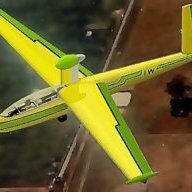
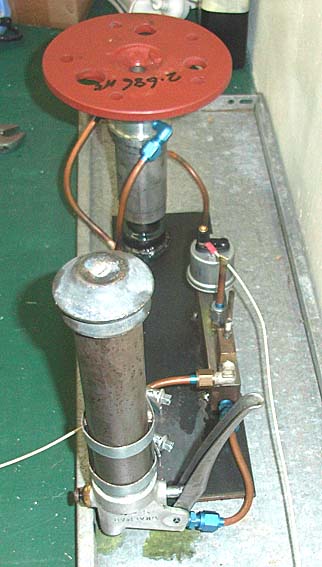
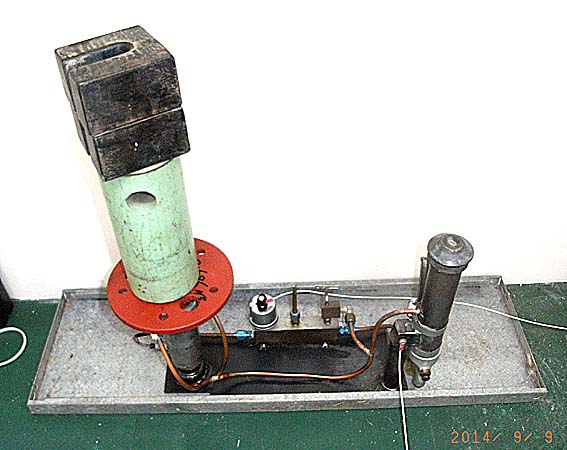
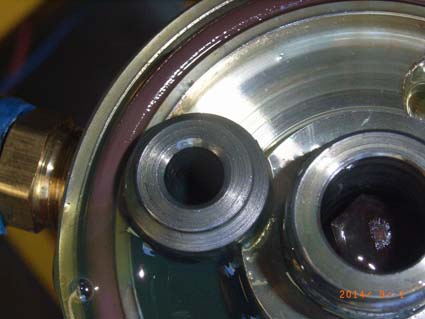
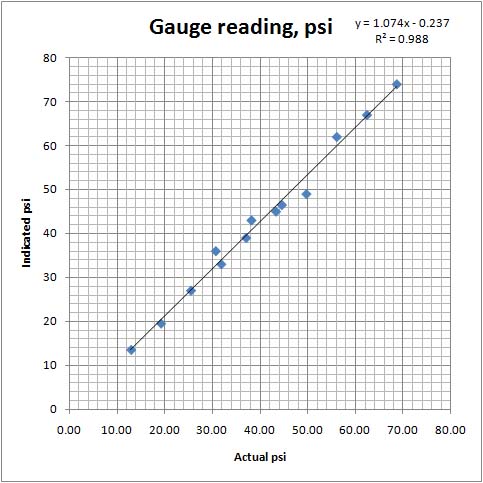
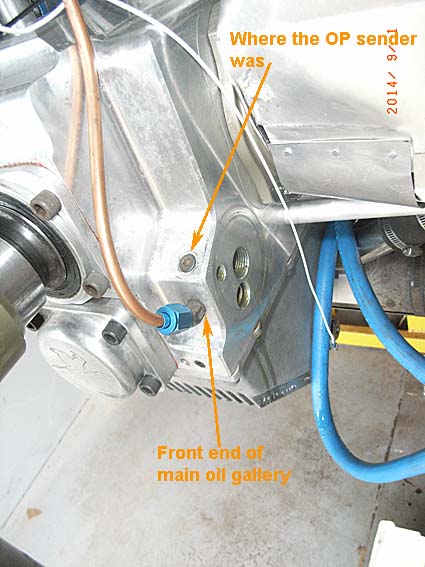
Jabiru 2200 oil pressure problems!
in Engines and Props
Posted
Whatever form of gauge you use, it needs to be calibrated either immediately before or immediately after the test. Mechanical gauges generally hold their calibration for a long time, but electric sender types are not so consistent.
The reason people use the electric sender type in aircraft is because there are requirements to prevent the release of flammable and/or toxic fluids - especially as a fine spray under pressure - within the cockpit. The weak part of a mechanical gauge is the tube that connects it to the engine, or the Bourdon tube inside the gauge; both are susceptible to fatigue failure; and a failure means the engine runs out of oil, apart from whatever effect it may have on the pilot.